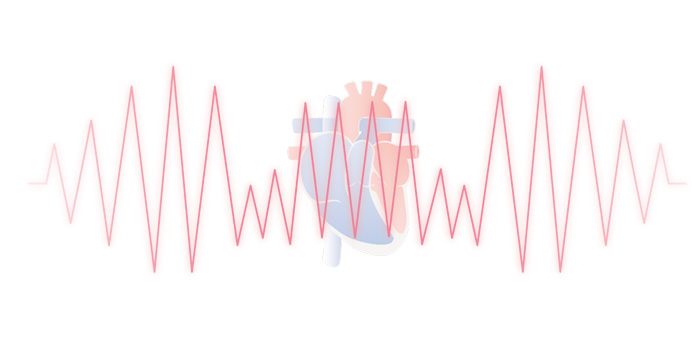
News & Events
News & Events
News
October 23, 2017
Detecting heart arrhythmias before they happen

CiRA researchers use iPS cells to model Torsade de Pointes, a type of tachycardia.
It is estimated that one drug will cost several billion dollars before it will be approved for sale to patients. Costs soar higher when a drug that is approved is withdrawn, as was the case for cisapride and flecainide, two drugs that were discovered to induce heart arrhythmias in patients. These unexpected effects were because none of the experiments done to test drug safety sufficiently recapitulated behavior in the human heart. Professor Jun Yamashita has reported a new human cell model made from iPS cells that may solve this problem.
"Torsade de Pointes (TdP) are drug-induced lethal arrhythmias. They appear in electrocardiograms as twisted waves. Our three-dimensional (3D) cardiac sheets derived from iPS cells showed TdP when treated with cisapride and flecainide. No other human heart models does this," he said.
The model is based on iPS cell differentiation protocols by the lab and bioengineering technology by collaborators at Tokyo Women's Medical University.
Yamashita and his team show that for a model to confirm whether a drug will induce TdP, two conditions must be met. First, the model must include a mixture of cardiomyocytes (heart muscle cells) and non-cardiomyocytes (other heart cells). Second the model must be 3D, not 2D, which has been the standard.
"TdP are seen as spiral waves that have a meandering pattern," said Yamashita. "We saw the meandering pattern much less in 2D models." Never did the researchers see TdP when the 3D models consisted of only cardiomyocytes.
"New phenomenon that has been never occurred in normal 2D culture condition can suddenly emerge if we prepare 3D and heterogenous cell population. That is the most surprising outcome in this study."
The 3D shape and mixture of cardiomyocytes and non-cardiomyocytes changes the electrical conduction of the heart. Cisapride was originally approved for gastric illnesses. On the other hand, flecainide was originally prescribed for patients with heart illnesses. Coronary patients normally show a loss of cardiomyocytes, thus increasing the proportion of non-cardiomyocytes in the heart. Models like the one from the Yamashita lab can modify the ratio of cells to test for TdP in different patient demographics.
"Our protocol can adapt the cardiomyocyte ratio. We can use the model to understand TdP. Our results suggest electrophysiology and structure features contribute to TdP generation," he said.
Paper Details
- Journal: Nature Communications
- Title: Modelling Torsade de Pointes arrhythmias in vitro in 3D human iPS cell-engineered heart tissue
- Authors: Masahide Kawatou1,2, Hidetoshi Masumoto1,2, Hiroyuki Fukushima1, Gaku Morinaga1,3, Ryuzo Sakata2, Takashi Ashihara4, and Jun K Yamashita1
- Author Affiliations:
- Center for iPS Cell Research and Application (CiRA), Kyoto University, Kyoto, Japan
- Department of Cardiovascular Surgery, Kyoto University Graduate School of Medicine, Kyoto, Japan
- Nippon Boehringer Ingelheim Co., Ltd. Kobe Pharma Research Institute, Kobe, Japan
- Department of Cardiovascular Medicine, Shiga University of Medical Science, Otsu, Japan






















